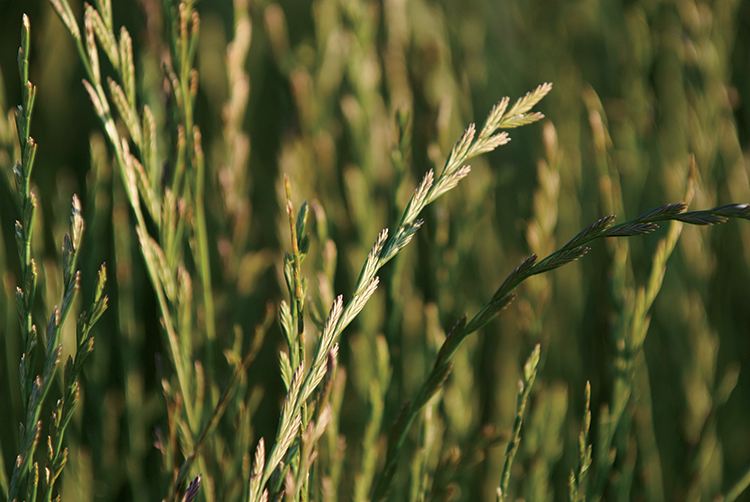Home > Oregon > Oregon Crops & Livestock > World Class Oregon Grass
World Class Oregon Grass

In Oregon, the grass is always greener on every side of the fence, thanks to the $411 million grass seed industry.
“Oregon is considered the Grass Seed Capital of the World,” says Don Doerfler of Ioka Farms, which has been processing and packaging grass seed since 1977. “Grass seed is important to Oregon in many ways.”
Nestled mostly in the Willamette Valley, 500,000 acres of grass flourish in the mild maritime climate.
“We’re in a unique pocket here,” says Bryan Ostlund, with the Oregon Grass Seed Commissions. “It doesn’t get particularly cold in the winter or hot in the summer.”
Many species of grass are cultivated in Oregon for forage and turf purposes. Ryegrasses (both annual and perennial), tall fescue, fine fescue and Kentucky bluegrass blanket the countryside.
“Some are bred for amenity grasses, which would be used for World Cup soccer and Super Bowl fields,” Ostlund says. “Other types of grass are bred for forage for the livestock industry.”
An impressive 95 percent of grass seed produced in Oregon leaves the state to be used across the country and the world. Oregon sells cool season grass seed to all 50 states.
Oregon provided an impressive 300,000 pounds of grass seed for the 2014 FIFA World Cup in Brazil and 165,000 pounds at the 2010 FIFA World Cup in South Africa. The blend of perennial ryegrass and Kentucky bluegrass passed rigorous performance tests including wear tolerance, density, drought resistance and quick recovery.
The durability and texture of Oregon grass makes it the top choice for sports fields, parks, lawns and the most popular seed in the world for golf courses.
“It’s safe to say, anywhere you see natural turf, it is likely coming from Oregon,” Ostlund says.
In addition to luscious lawns, Oregon’s grasses have another important application. When planted as a cover crop, grasses prevent erosion and water pollution while promoting soil health.
“Any time you’ve got something planted on ground, you have less erosion,” says Nick Bowers, of KB Seed Solutions. “A root system growing will hold soil in place so it won’t just wash away.”
Oregon ryegrass is used extensively in Midwestern states in tandem with no-till practices to improve crop production.
“Ryegrass can actually hold on to nitrogen in the soil,” Ostlund says. “Then when you burn it down or green chop it, that nitrogen is still available to something planted after it, like corn or soybeans.”
This is not only beneficial to the farmer, but to the quality of surrounding bodies of water.
Half a world away, other countries are using Oregon grasses for turf, forage and cover crops. Asian countries make up a large percentage of Oregon grass seed exports with China, Japan and Korea being the biggest consumers. In preparation for the 2008 Beijing Olympics, China turned to Oregon ryegrass for athletic fields and to prevent erosion along the banks of the famous Yangtze River.



